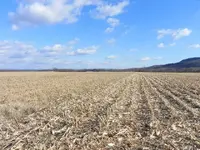Wow !
I just read the Owners Manual
http://www.garrett.com/hobbysite/hbby-manuals/1533500_at_gold_rev_a_english.pdf and I can tell you that I will have to read it a few more times. There is a lot more to this than I thought. Im sure I will figure it out over time but some of the features are confusing. Time and experience shall prevail...I hope.
When you say "non-pro" mode then are are also referring to all metal mode ?
Thanks for the help
Sometimes an experience is worth 10x the book! Most of what is in the book seemed like gobbletygook until I actually picked up the machine. Then it was "Lightbulb" moment. "OH! Now I get what that means!"
And that was just with the ACE350, which doesn't do the Pro-mode.
It took me about 10 hours of actual practice to understand the machine, and probably 30-50 to become good at it. Yes, you can hand it to someone and say "swing until you get a beep," but there's SO much more to it.
You'll be digging EVERYTHING for the first 20-50 hours, just to really get a grasp of what's under the dirt, and that's not including the time you're spending learning the machine's bells and whistles.
For example, basic stuff like ground sensitivity, sensitivity, discrmination, etc... all come into play. Some equipment when you discriminate will reduce depth, others simply "block the sound from coming out" but still technically detect the signal (and some will show the detection on the screen, too!)
Equipment that does bell tone is VERY different than equipment that tones through variable sound squeals. No matter which type you use, you'll learn to determine what's in the ground by the signal your getting (it'll vary for a single target). For example, a double chatter on my ACE350 means something is on the surface (even though the signal depth will show 8+ inches), and bottle tabs will beep iron signals at the edges, compared to nickels and gold which are solid beeps.
But all that is just "SOMETIMES." Sometimes I'll get solid tones on Nickel and it'll come out a pristine new pop tab top. LOL
You'll learn to determine what's under the ground, too, by size.. Nails, cans, crushed cans, can slaw, etc... all have a profile and pattern that will be unique to your equipment (and partially to how you like to swing... resulting in different detection tones).
You'll find some tiny targets love a fast swing for a blip, and you'll lose them under slow methodical swings. Other targets on their vertical edge will only be detectable ONE direction on the swing.
Weird stuff is all over the place, and you'll keep learning for years.
Part of the reason I went with the ACE350, is that I knew that it gave me a decent amount of discrimination and power without breaking the bank... I also know that the ACE series hold their value pretty well. I plan to sell one of my two ACE series when I save a bit more for a Garrett ATPro.
All in all, though, I'm thinking the Pro will be super nice, but it wasn't something I could justfy at first. It was TOO easy to get a 350 and get out there swinging. I have NO regrets, even though I intend to upgrade.
The difference between each "level" of detectors is more discrimination, excelling at one thing or another, and a steeper learning curve. No matter how you look at it, you're going to be putting time in.
I chose to get out there, knowing the targets I was shooting for were going to be less than 4" from the surface (park finds), and I could certainly catch jewelry with it. Identify your targets, first, then go get to it, brother!
One thing is for sure... you need to start swinging to start really learning!
Cheers!
Skippy








